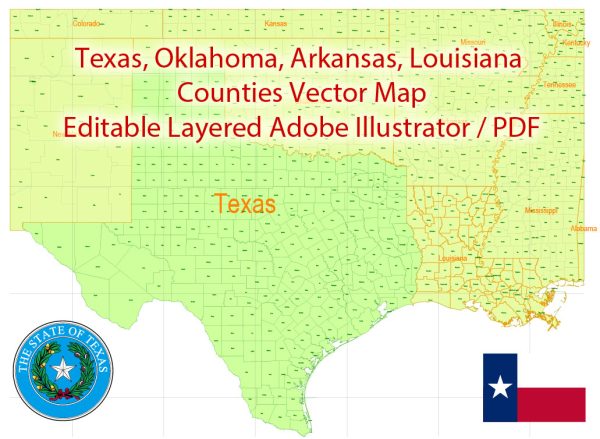Texas and Louisiana are two neighboring states in the southern United States, each with its own unique ecological characteristics and diverse landscapes.
Texas:
- Geography: Texas is the largest state in the contiguous United States, and its vast size encompasses a wide range of geographical features. It has deserts in the west, rolling plains in the north, dense forests in the east, and coastal areas along the Gulf of Mexico.
- Climate: Texas experiences a varied climate. The western part of the state is arid, with hot summers and mild winters, while the eastern part has a more humid, subtropical climate. The Gulf Coast is prone to hurricanes.
- Ecosystems: Texas is known for its diverse ecosystems, including desert landscapes in the Big Bend region, the Chihuahuan Desert, the Texas Hill Country with limestone hills and caves, the Piney Woods in the eastern part, and the Gulf Coast with marshes and bayous. The state is also home to several national parks and wildlife refuges.
- Biodiversity: Texas is rich in biodiversity, with numerous species of wildlife, including white-tailed deer, armadillos, rattlesnakes, and a variety of bird species. It’s also known for its diverse plant life, including cacti in the west and tall pine trees in the east.
- Conservation: Texas has several conservation initiatives and organizations working to protect its natural resources, such as the Texas Parks and Wildlife Department and various private land trusts.
Louisiana:
- Geography: Louisiana is known for its low-lying, marshy terrain. It is bordered by the Gulf of Mexico to the south and the Mississippi River to the east. The state is characterized by its extensive swamps and bayous.
- Climate: Louisiana has a humid subtropical climate, with hot, humid summers and mild winters. It’s prone to heavy rainfall and is at risk of hurricanes, especially along the Gulf Coast.
- Ecosystems: Louisiana is famous for its unique wetland ecosystems, including the Atchafalaya Basin and the vast Mississippi River Delta. These wetlands are home to diverse wildlife and vegetation, including cypress trees, alligators, and numerous bird species.
- Biodiversity: The state’s wetlands are essential habitats for a wide range of wildlife, including nutria, mink, river otters, and various waterfowl. Louisiana’s coastal areas are also crucial for migratory birds.
- Conservation: Conservation efforts in Louisiana are focused on protecting and restoring the state’s wetlands, as they are threatened by land subsidence, sea-level rise, and human activities. Various organizations and government agencies are dedicated to preserving these vital ecosystems.
Both Texas and Louisiana offer a rich tapestry of natural landscapes and ecosystems, but they face unique environmental challenges related to conservation, climate change, and human development. Conservation and sustainable management of their natural resources are crucial for the well-being of both states and the preservation of their distinctive ecologies.


 Author: Kirill Shrayber, Ph.D.
Author: Kirill Shrayber, Ph.D.